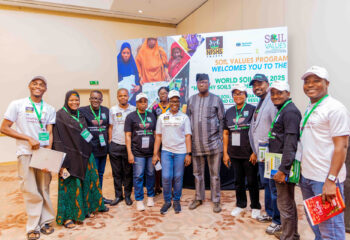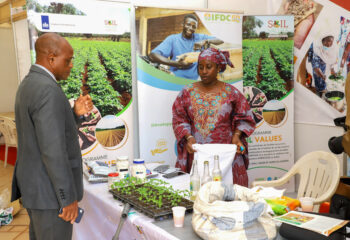
The ECOWAS fertilizer policy stresses the need to stimulate fertilizer supply and demand in the region. The USAID West Africa Fertilizer Program (USAID WAFP), implemented by the International Fertilizer Development Center (IFDC) between 2012 and 2017, furthered this goal through empowering private sector businesses operating in the region, by professionalizing and promoting sustainable fertilizer business development models.
Since 2018, this support has been extended and expanded by the Feed the Future Enhancing Growth through Regional Agricultural Input Systems (EnGRAIS) for West Africa project, also implemented by IFDC. To accomplish these objectives, the program which covers all the 15 ECOWAS member states plus Chad and Mauritania, aims to achieve the following:
- Competitive, inclusive, private sector-led, regional fertilizer market strengthened;
- Comprehensive input packages developed and disseminated in cooperation with CORAF/WECARD;
- Fertilizer policy and regulatory systems across West Africa improved and harmonized in accordance with ECOWAS guidance; and
- Mobilizing commitment and harmonizing engagement from key stakeholders across West Africa supported by mission buy-ins.
The West Africa Fertilizer Business Information Guide (WAFBIG) presents a regional and comprehensive overview of the fertilizer business environment in West Africa. Its purpose is to furnish existing and prospective private sector players with the requisite fertilizer business and market information to guide and inform the industry’s decision-making. WAFBIG will be updated and published annually in close collaboration with the West Africa Fertilizer Association (WAFA) and AfricaFertilizer.org.
In this new and enriched version of the former West Africa Fertilizer Business Information Map (WAFBIM), you will find the usual and updated country market overviews and statistics, maps and profiles of fertilizer production and blending facilities, and regional fertilizer regulations, labeling and packaging standards applicable in West Africa.
You will also find a new set of additional information, including fertilizer logistical and cost information along key trade corridors, crop-specific fertilizer recommendations and agro-input packages suitable for the various West African agro-ecological zones, as well as a brand-new directory of accredited fertilizer quality control laboratories.
We hope this redesigned and enriched version will help you to contribute to the sustainable and steady growth of the agricultural sector in West Africa, through the sound use of more quality, soil- and crop-specific fertilizers by the many smallholder farmers who are feeding West Africans.
Robin Wheeler, EnGRAIS COP




